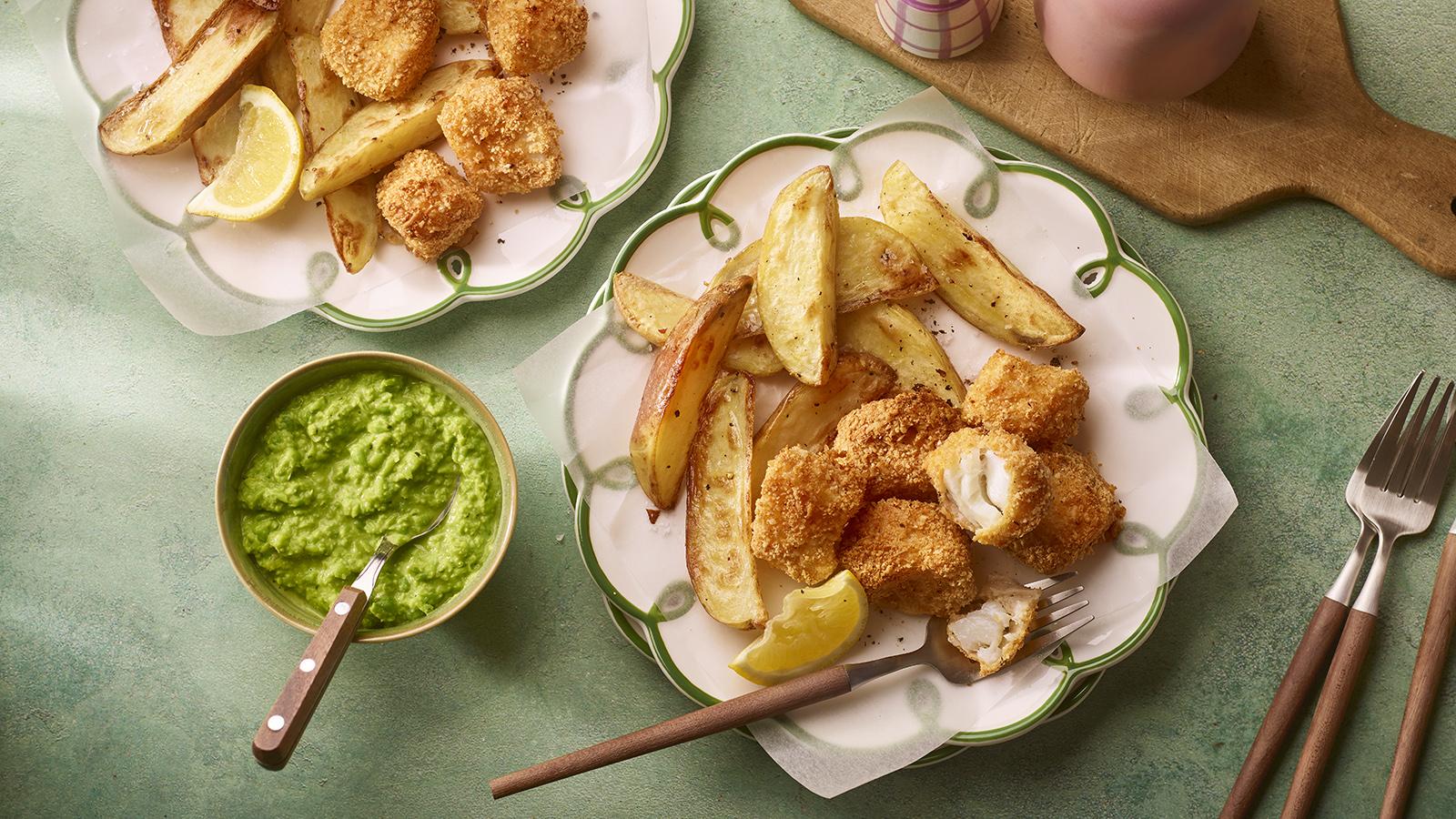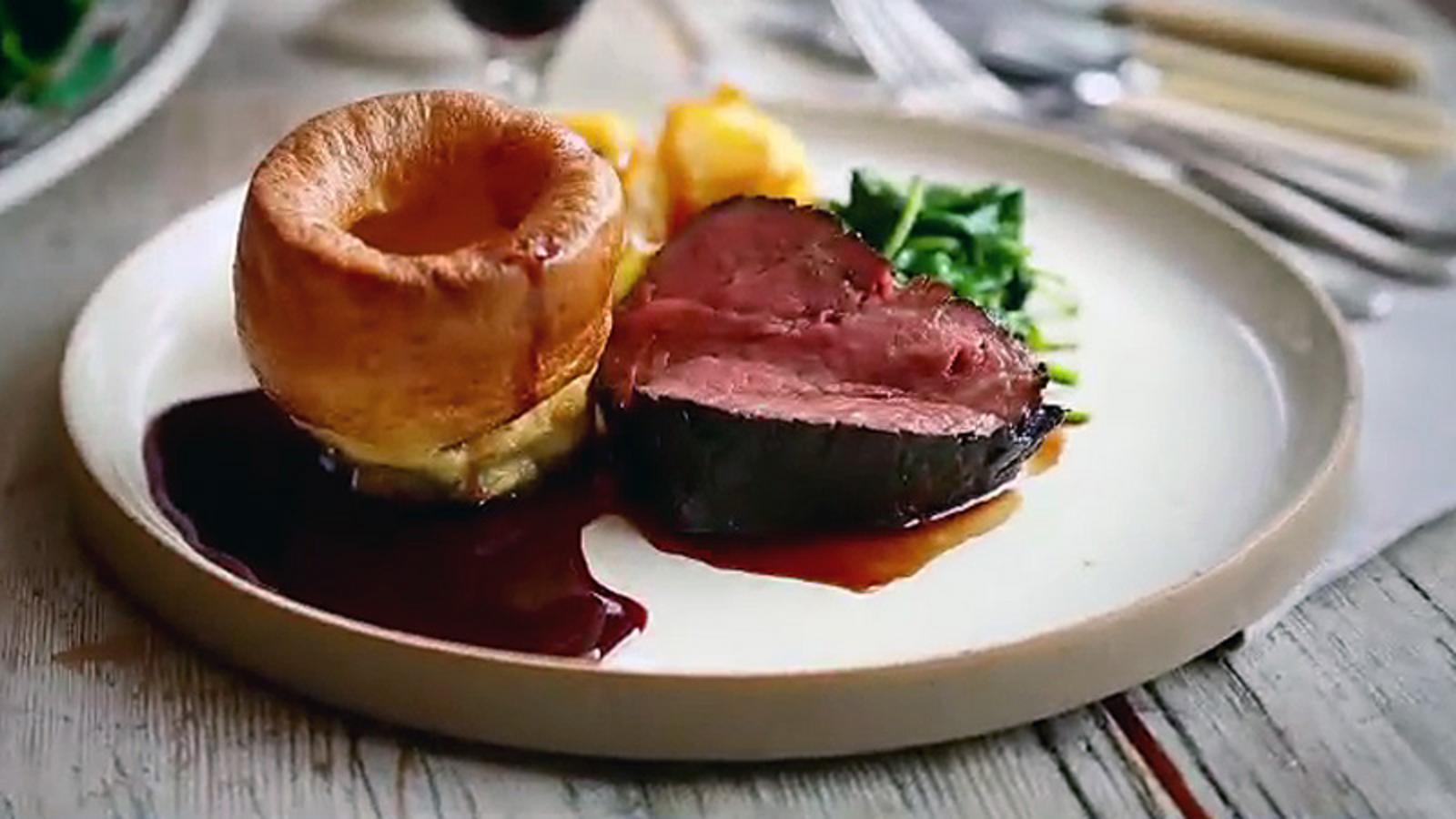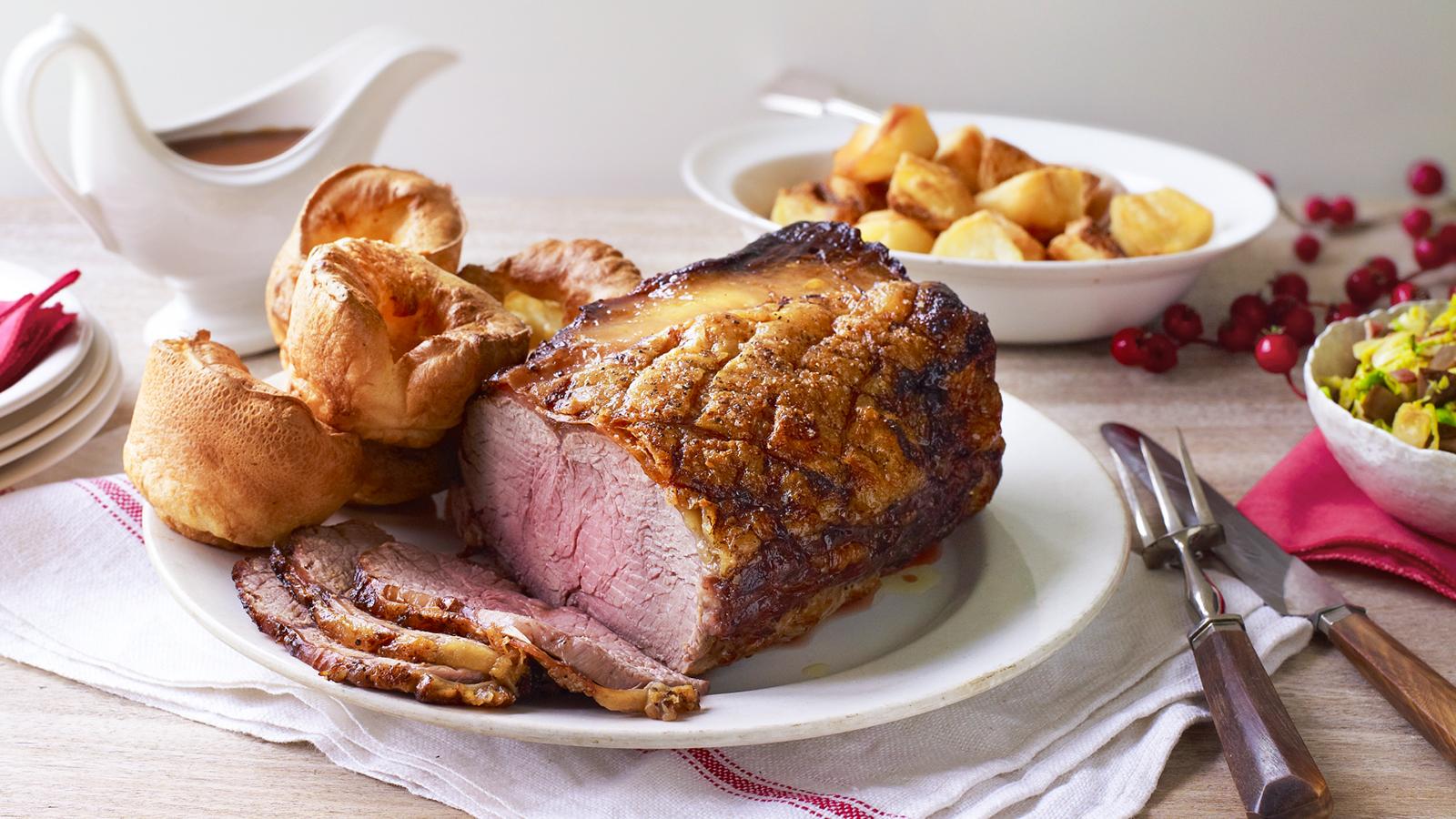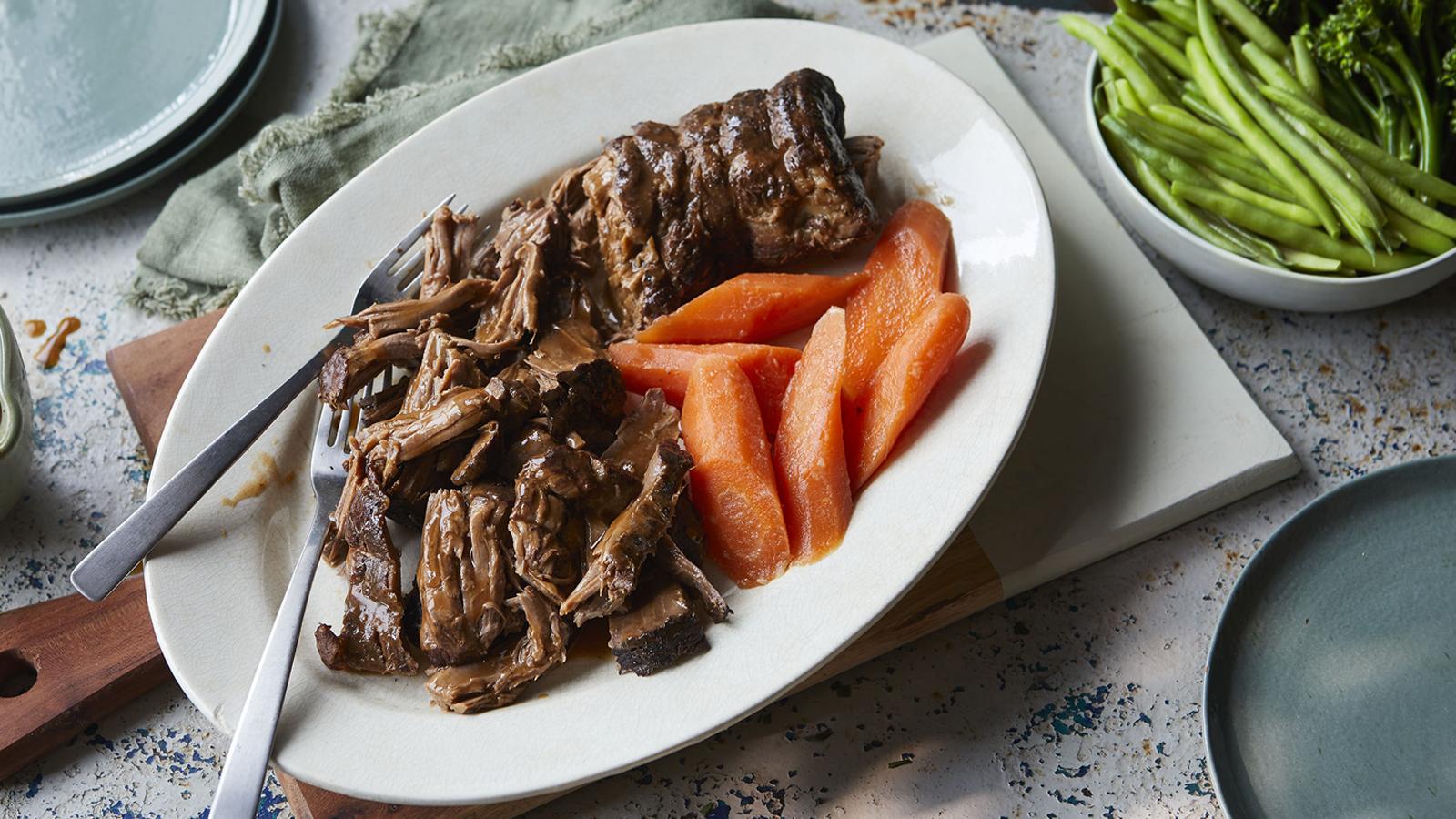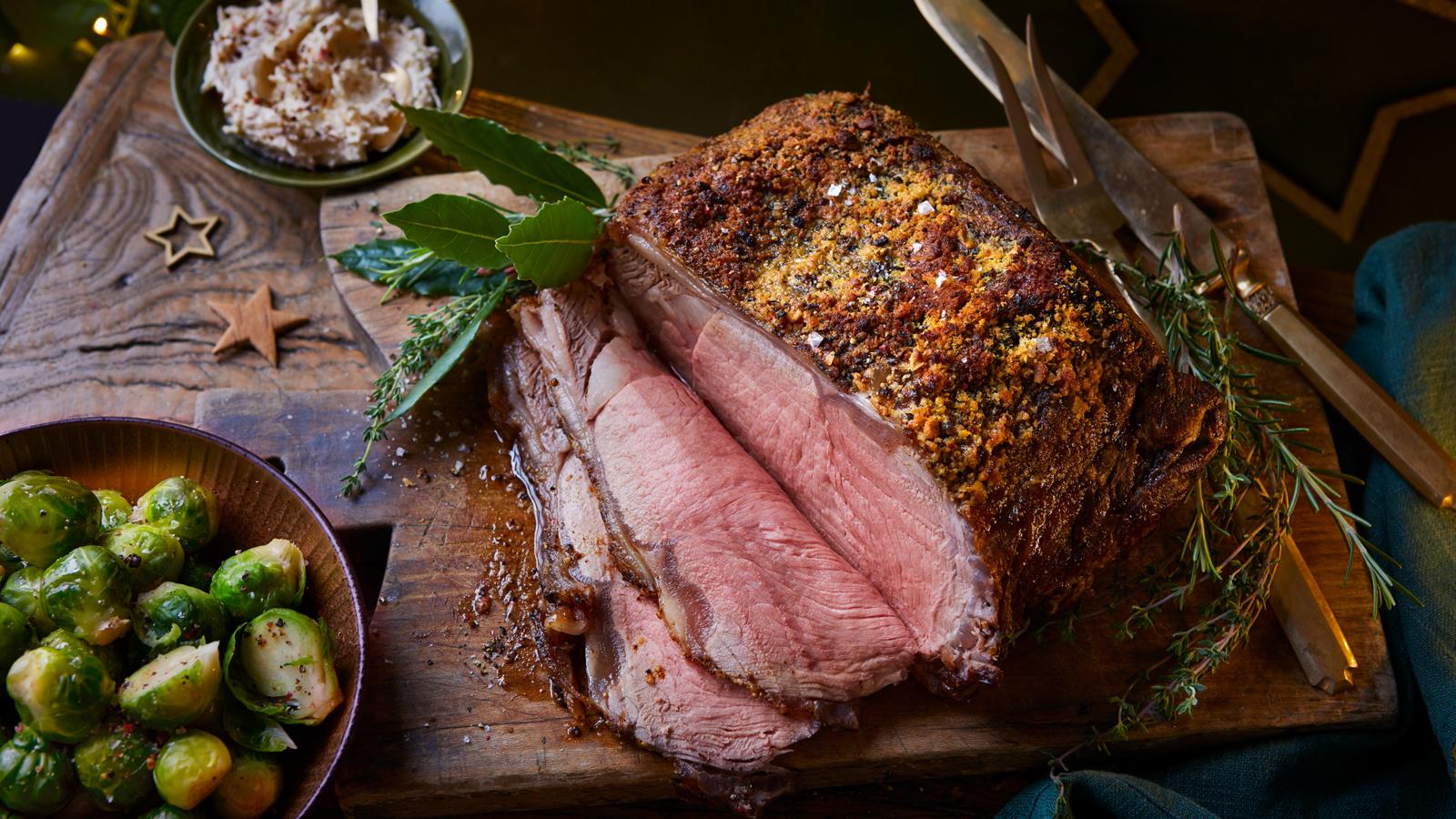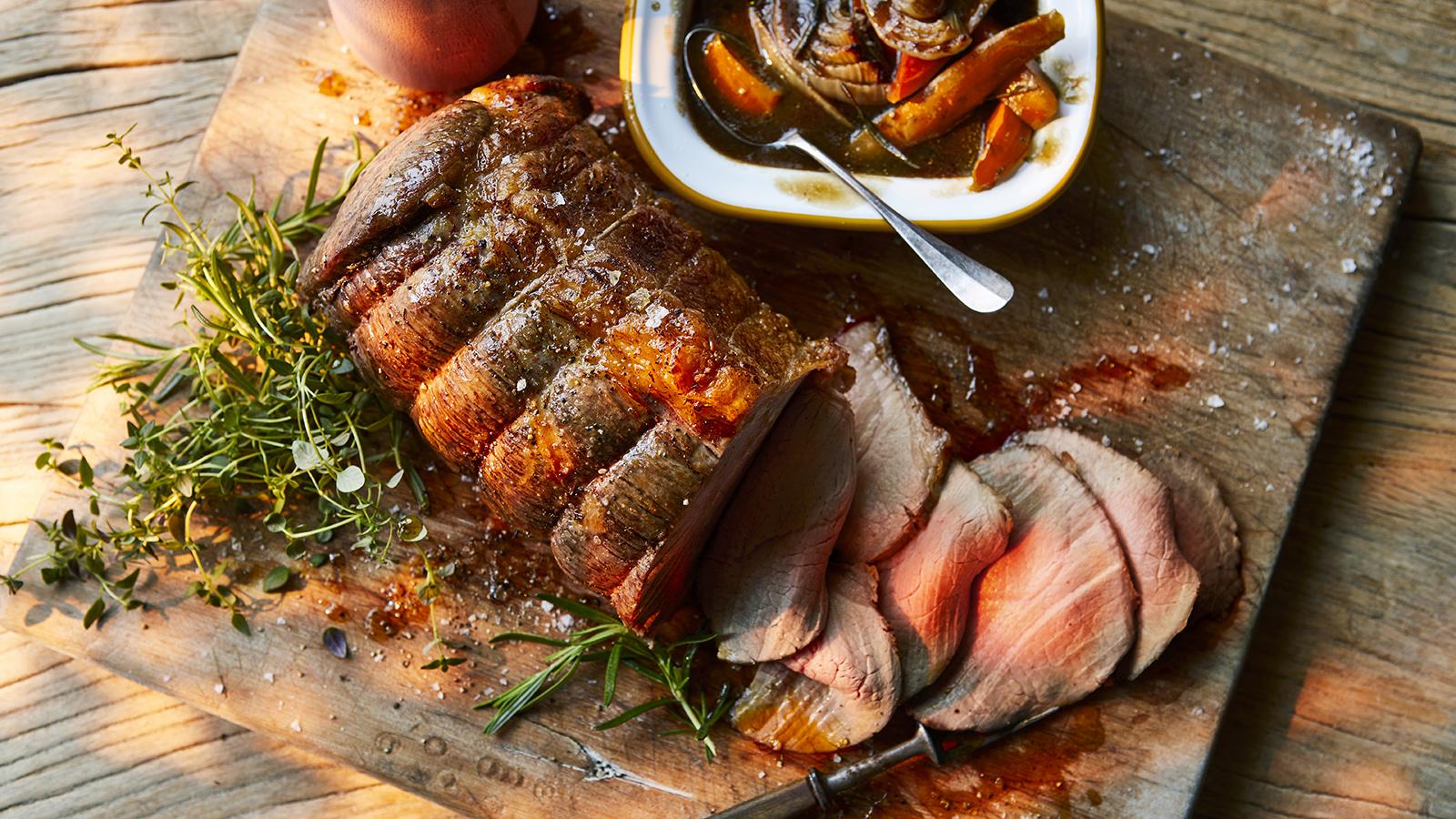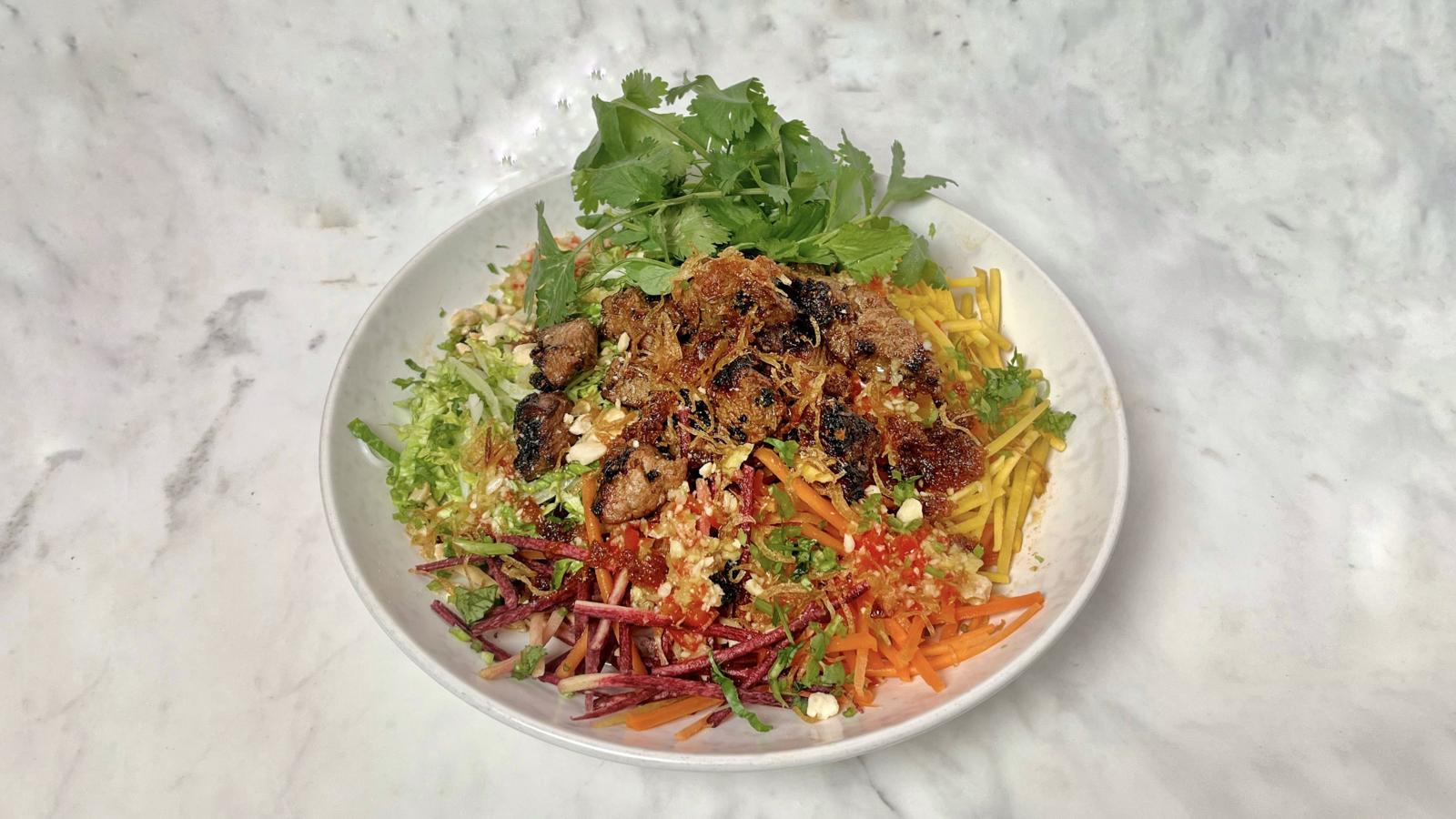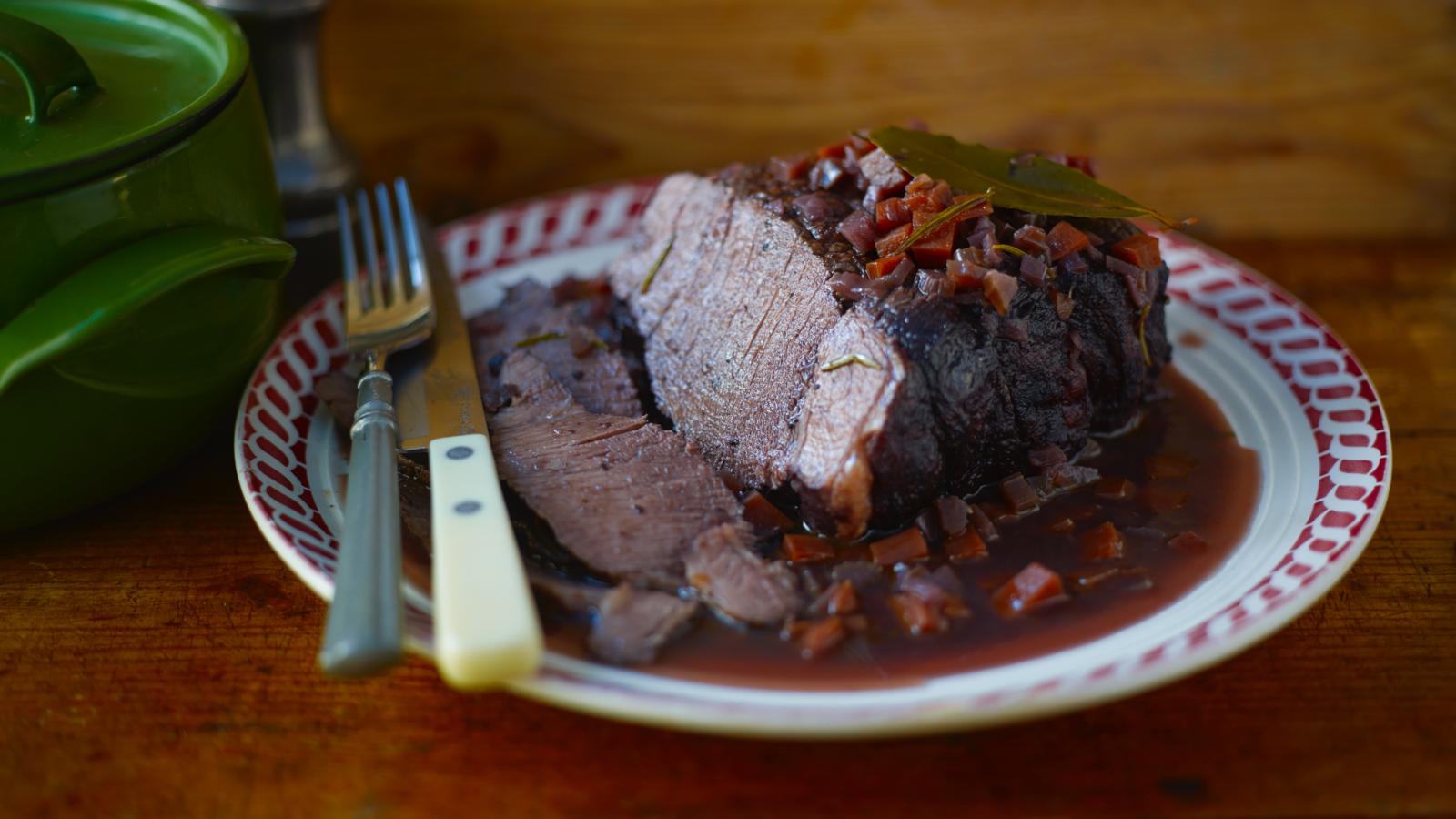Roast beef dinner

- Prepare
- less than 30 mins
- Cook
- 30 mins to 1 hour
- Serve
- Serves 4
A great family roast, cooked in a casserole with lots of vegetables to add flavour to the gravy without having to rely on UPF granules or stock cubes. Serve with steamed vegetables.
If a roast beef dinner just isn't right without a side of Yorkshire puddings, be aware that the readymade ones are usually UPF. Making your own avoids this and they freeze brilliantly so it's worth making a few extras to save for other meals.
Ingredients
For the potatoes
- 800g/1lb 12oz floury potatoes, preferably Maris Piper, peeled and cut into roughly 5cm/2in chunks
- 2–3 tbsp cold pressed rapeseed oil or extra virgin olive oil, plus extra for greasing
For the roast beef
- 800g/1lb 12oz beef topside, tied (see tip)
- 2 tbsp cold pressed rapeseed oil or extra virgin olive oil
- 1 medium onion, thickly sliced
- 2 medium carrots, trimmed and thickly sliced
- 2 celery sticks, trimmed and thickly sliced
- 2–3 bushy sprigs fresh thyme or ½ tsp dried thyme
- 1 large bay leaf
- 1 heaped tbsp plain flour
- few drops naturally brewed dark soy sauce
- sea salt and black pepper
Method
To prepare the potatoes, a third fill a large saucepan with water, cover with a lid and bring to the boil. Add the potatoes, return to a simmer and cook for 6 minutes. Drain in a colander (reserving the water for the gravy) and stand for a couple of minutes.
Return the potatoes to the pan, add 2 tbsp of the oil and season with salt and pepper. Toss well together. Scatter the potatoes over a large oiled baking tray.
Preheat the oven to 180C/160C Fan/Gas 4
While the potatoes are simmering, season the beef all over with salt and pepper. Heat 1 tablespoon of the oil in medium flame-proof casserole (see tip) and fry the beef for 6–8 minutes over a medium-high heat, or until browned on all sides, turning every couple of minutes.
Transfer the beef to a plate and add the remaining oil, onion, carrot and celery to the casserole. Fry over a medium–high heat for 5 minutes, or until nicely browned. Sprinkle with the thyme and add the bay leaf.
Place the beef on top of the vegetables and cover loosely with a lid or foil. Cook in the oven for 35–45 minutes for rare beef (see tip). If you prefer your meat medium or well done, increase the cooking time by 10–15 minutes. Take care that the beef doesn’t cook too long though as topside is a lean cut and can toughen quickly. Remove the lid or foil after 15 minutes.
Cook the potatoes on a shelf above the beef for 50–60 minutes, turning once.
When the beef is cooked to your taste, remove the casserole from the oven and place the joint on a board or serving platter. Cover with foil and a dry tea towel and leave to rest for 15–20 minutes. Turn the potatoes and drizzle with a little more oil if they are looking dry. Increase the oven temperature to 220C/200C Fan/Gas 7 and roast for the remainder of their time, or until crisp and golden.
To make the gravy, put the casserole with the vegetables on the hob – the casserole will be very hot from its time in the oven, so take care. Pick out the whole herbs.
Sprinkle the flour over the vegetables and any juices and stir well. Gradually add 400ml/14fl oz of reserved potato boiling water and bring to a simmer. Cook for 5 minutes, stirring regularly. (If you have discarded the potato water, use plain water instead – or water you have used to cooked any other vegetables.)
Strain the gravy through a sieve into a clean saucepan, pressing the vegetables with the back of a spoon to release as much flavour as possible. Add any resting juices from the beef and warm through gently, adding a little soy sauce for flavour and colour. Adjust the seasoning to taste and keep warm until the beef has rested and the potatoes are crisp and golden.
Carve the beef and serve with home-made Yorkshire puddings and freshly cooked vegetables, with the gravy in a warmed jug alongside.
Recipe tips
Topside is often labelled as a generic 'roasting joint' in supermarkets. When choosing your beef, look for the most even shape you can find, ideally with a layer of fat. Sometimes topside is sold in irregular shapes, meaning the thinner or flatter ends will cook more quickly. Watch the cooking time carefully and ideally invest in a digital food thermometer for the best results.
It will need to reach 52C for rare, 60C for medium and 71C for well-done meat.
The beef cooks perfectly in a medium casserole. It will need to be suitable for the hob as well as the oven. If you don’t have a lidded casserole, you can also cook the beef in a sturdy roasting tin. Brown the beef and the vegetables in a frying pan before putting into the tin (deglaze with a little water and use for the gravy). They need to fit fairly snuggly, so the vegetables don’t spread out and burn. Ensure your tin is suitable for placing on the hob too.
If there are no meat juices forming at the bottom of the casserole when you remove the lid or foil, add around 4–5 tablespoons water.
Choose a board to rest your beef that has a channel around the sides to collect juices that you can use to give extra flavour to your gravy.
Snip off all the string from the beef before carving. Any leftover meat can be served cold with salad or in sandwiches the next day. Keep covered in the fridge. Only carve what you need at the table and then carve again if serving cold.
